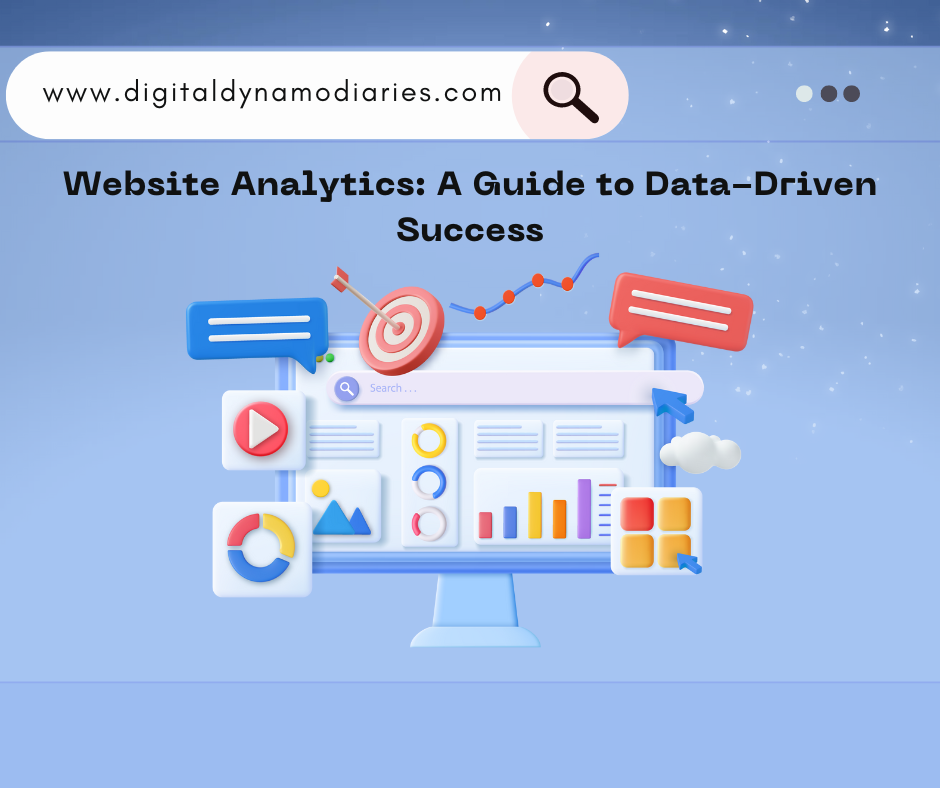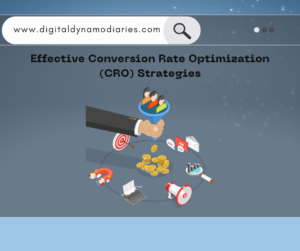Website Analytics: A Guide to Data-Driven Success
Understanding your website’s performance is critical in the digital age, where competition is fierce and attention spans are fleeting. Website analytics are the backbone of any successful online strategy, providing the data-driven insights needed to make informed decisions. But what exactly is website analytics, and how can you harness its full potential? This comprehensive guide will walk you through the fundamentals of website analytics, the key metrics to monitor, and the tools you need to optimize your site for growth and success. Whether you’re a seasoned marketer or a business owner just starting, mastering website analytics is essential to staying ahead of the curve.
What is Website Analytics?
Website analytics is the process of gathering, measuring, and analyzing data related to your website’s traffic and user behavior. It involves tracking a wide range of metrics, from the number of visitors to the pages they view, the actions they take, and the paths they follow through your site. By interpreting this data, you can gain valuable insights into how well your website is performing and identify areas for improvement.
At its core, website analytics is about answering critical questions:
1. Who is visiting your website? Demographic data reveals the age, gender, location, and interests of your audience, helping you tailor content and marketing strategies to their needs.
2. How are visitors finding your site? Traffic sources show whether users are arriving via search engines, social media, referral links, or direct visits, informing your marketing efforts.
3. What are users doing on your site? Behavior metrics, such as page views, session duration, and navigation paths, offer insights into how visitors interact with your content and features.
The Strategic Importance of Website Analytics
Website analytics is more than just a collection of numbers and charts, it’s a strategic tool that can transform your business. Here’s why it’s indispensable:
1. Enhancing User Experience
User experience (UX) is a critical factor in your website’s success. If visitors struggle to find what they’re looking for, encounter slow loading times, or face confusing navigation, they’re likely to leave and never return. Website analytics helps you pinpoint these pain points by tracking metrics such as bounce rate, exit pages, and session duration.
- Improve Content Quality: Ensure that your content is relevant, informative, and engaging.
- Enhance Page Load Speed: Slow-loading pages are a major cause of high bounce rates.
- Optimize Navigation: Make it easy for users to find related content or take the next step.
2. Optimizing Content Strategy
Content is king, but only if it resonates with your audience. Website analytics provides insights into which content is performing well and which is falling flat. By analyzing metrics like page views, time on page, and social shares, you can determine what topics, formats, and styles are most effective.
- Expand on High-Performing Topics: If certain topics consistently attract more traffic and engagement, consider creating more content in that area.
- Revamp Underperforming Content: Identify underperforming content and either improve it or shift your focus to more promising areas.
- Experiment with Different Formats: Test different content formats, such as videos, infographics, or interactive elements, to see what resonates best with your audience.
3. Driving Conversions and Revenue
Ultimately, the goal of most websites is to drive conversions, whether that means making a sale, generating leads, or getting users to sign up for a newsletter. Website analytics plays a crucial role in understanding the conversion process and identifying bottlenecks.
- Simplify the Conversion Process: Reduce the number of steps required to complete an action, such as shortening forms or streamlining the checkout process.
- Use Clear Calls to Action (CTAs): Make sure your CTAs are prominent, clear, and compelling.
- A/B Test Different Elements: Experiment with different headlines, images, and layouts to see what resonates best with your audience.
Essential Metrics to Track for Success
To fully leverage website analytics, it’s important to focus on the right metrics. While there are countless data points you can track, the following metrics are essential for most websites:
1. Traffic Sources
Traffic sources reveal how visitors are finding your website. This information is crucial for allocating your marketing resources effectively. There are several primary traffic sources to monitor:
Organic Search: Visitors who find your site through search engines like Google. High organic traffic indicates strong SEO performance.
Direct Traffic: Visitors who type your website URL directly into their browser. This often reflects brand recognition and repeat visitors.
Referral Traffic: Visitors who arrive via links on other websites. Building relationships with high-authority sites can boost referral traffic.
Social Media: Visitors who come from social media platforms like Facebook, Twitter, or LinkedIn. This reflects the effectiveness of your social media marketing.
Paid Search: Traffic from paid advertising campaigns, such as Google Ads. Tracking this helps you assess the ROI of your ad spend.
2. Bounce Rate
Bounce rate is the percentage of visitors who leave your website after viewing only one page. A high bounce rate can be a red flag, indicating that your content isn’t engaging or that users aren’t finding what they expected. However, it’s important to consider the context—some pages, like blog posts, naturally have higher bounce rates because they provide specific information without requiring further navigation.
To reduce bounce rate, you can:
Improve Content Quality: Ensure that your content is relevant, informative, and engaging.
Enhance Page Load Speed: Slow-loading pages are a major cause of high bounce rates.
Optimize Navigation: Make it easy for users to find related content or take the next step.
3. Session Duration and Pages per Session
Session duration refers to the average time visitors spend on your website, while pages per session indicates the number of pages viewed in a single visit. Together, these metrics provide a clear picture of user engagement. Higher values typically suggest that visitors find your content valuable and are exploring multiple pages.
To increase session duration and pages per session:
Create Interconnected Content: Use internal links to guide users from one piece of content to another.
Offer Engaging Multimedia: Videos, infographics, and interactive elements can keep visitors engaged longer.
Personalize User Experience: Tailor content recommendations based on user behavior to encourage further exploration.
4. Conversion Rate
Conversion rate is the percentage of visitors who complete a desired action, such as making a purchase, signing up for a newsletter, or filling out a contact form. This metric is crucial because it directly correlates with your website’s effectiveness in achieving business goals.
To improve conversion rates:
Simplify the Conversion Process: Reduce the number of steps required to complete an action, such as shortening forms or streamlining the checkout process.
Use Clear Calls to Action (CTAs): Make sure your CTAs are prominent, clear, and compelling.
A/B Test Different Elements: Experiment with different headlines, images, and layouts to see what resonates best with your audience.
Essential Tools for Website Analytics
To effectively track and analyze your website’s performance, you need the right tools. Here are some of the most popular and powerful options:
1. Google Analytics
Google Analytics is the most widely used website analytics tool, and for good reason. It offers a comprehensive suite of features that allow you to track virtually every aspect of your website’s performance. From basic metrics like page views and session duration to more advanced features like goal tracking and e-commerce reporting, Google Analytics provides the data you need to make informed decisions.
Key features include:
- Audience Reports: Understand the demographics, interests, and behaviors of your visitors.
- Acquisition Reports: See where your traffic is coming from and how different channels perform.
- Behavior Reports: Analyze user interactions with your site, including which pages are most popular.
- Conversion Reports: Track the effectiveness of your conversion funnels and identify opportunities for improvement.
2. Hotjar
Hotjar is a tool designed to give you a deeper understanding of user behavior through features like heatmaps, session recordings, and user feedback surveys. While Google Analytics provides quantitative data, Hotjar offers qualitative insights that reveal how users interact with your site.
Key features include:
- Heatmaps: Visual representations of where users click, scroll, and move their mouse on your pages.
- Session Recordings: Replay individual user sessions to see exactly how they navigate your site.
- Surveys and Feedback: Collect direct feedback from users to understand their needs and pain points.
3. SEMrush
SEMrush is an all-in-one marketing tool that offers website analytics, SEO tracking, and competitor analysis. It’s particularly useful for understanding your site’s visibility in search engines and identifying opportunities for growth.
Key features include:
- Organic Research: Track your site’s search engine rankings and discover new keyword opportunities.
- Backlink Analysis: Analyze your backlink profile and identify high-quality link-building opportunities.
- Competitor Analysis: Compare your site’s performance with that of your competitors to identify strengths and weaknesses.
Leveraging Analytics for Continuous Improvement
Website analytics isn’t a one-time task; it’s an ongoing process that should be integrated into your regular business activities. By continuously monitoring your website’s performance and making data-driven adjustments, you can achieve sustained growth and success.
1. Regular Audits and Reporting
Conduct regular audits of your website’s analytics to identify trends, anomalies, and areas for improvement. Create reports that summarize key metrics and provide actionable insights for your team. This will ensure that everyone is aligned and focused on the most important goals.
Key practices include:
- Set Clear Objectives: Define what you want to achieve with each audit and report.
- Identify Key Metrics: Focus on the metrics that are most relevant to your goals.
- Actionable Insights: Translate data into clear recommendations for improvement.
2. A/B Testing and Experimentation
A/B testing is a powerful way to optimize your website by comparing different versions of a page or element to see which performs better. Whether you’re testing headlines, images, or CTAs, A/B testing allows you to make data-driven decisions that can lead to significant improvements in conversion rates.
To effectively conduct A/B testing:
- Define Your Hypothesis: Clearly state what you want to test and why.
- Run Tests Simultaneously: Ensure that both versions are tested under the same conditions.
- Analyze Results Thoroughly: Don’t jump to conclusions, make sure the data supports your findings.
2. Adapting to Changing Trends
The digital landscape is constantly evolving, and so should your website. Stay informed about the latest trends and best practices in website analytics and be ready to adapt your strategies accordingly. Whether it’s adopting new tools, experimenting with different content formats, or adjusting your SEO tactics, staying flexible and responsive is key to long-term success.
To stay ahead of the curve:
- Follow Industry News: Keep up with the latest developments in digital marketing and website analytics.
- Attend Webinars and Conferences: Learn from experts and network with peers to gain new insights.
- Regularly Update Your Tools: Ensure that you’re using the most up-to-date tools and features to maximize your analytics capabilities.
Conclusion
Mastering website analytics is essential for any business looking to succeed online. By understanding the key metrics, utilizing the right tools, and continuously optimizing your site, you can unlock the full potential of your digital presence. With this comprehensive guide, you’re well on your way to becoming a data-driven powerhouse, capable of making informed decisions that drive growth, engagement, and revenue. Embrace the power of website analytics, and watch your digital success soar.



